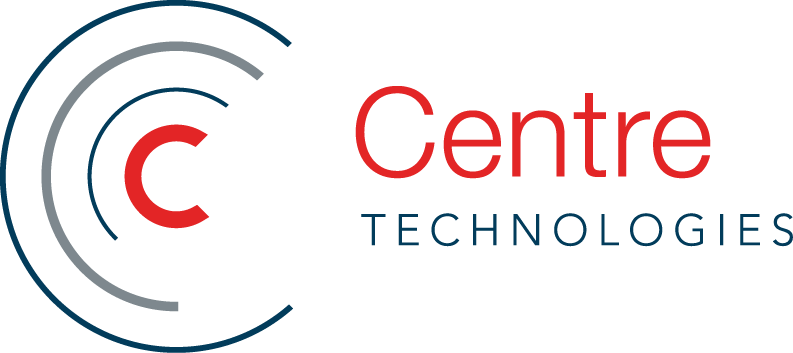How To Avoid the Cost and Risks of Cybersecurity in the Age of AI
Like mutating bacteria, cyberattacks have been mutating into ever more pernicious threats, largely thanks to the rapidly evolving AI infrastructures littering the internet (and every solution know to man, it seems). This isn't news to the public, so likely you've invested in some cybersecurity heavy hitters like an IRP, Employee Awareness, or most likely, cyber insurance. But there is a cost (and sometimes a risk), including insurance premiums, compliance, and the expertise, tacked onto your proactive initiative. Let's dig into how to avoid those premiums and risks.
Featured in this article:
- A Reminder of the Continued Rise in Ransomware Sophistication
- 2 Tips for Avoiding the Risk and Cost When Investing in Cybersecurity
- Real Life Cybersecurity Insurance Non-Compliance Example (Healthcare Focused)
- How to Find the Right Cyber Insurance Fit For Your Industry
- Ways Centre Can Help You Along the Way
Ransomware continues to be the Most Common Type of Cyber Threat
Since it's October, let us begins with a spooky cyber-tale: Somewhere, right now, out there on the Internet, someone is poring over a collection of hundreds of affordable exploit kits, systematically deciding which one to purchase to attack your network. They know your email addresses, they know where you work from LinkedIn, Twitter, Facebook or other social media, they know who your peers are at work, and in some cases they also know your password because you use a common one for all of your accounts because it's convenient...and with a little effort they can figure out which of your friends deal with the financial transactions in your company. All they need is for you to click on an innocent or very convincing link in an email sent to you from someone you believe is a peer...and they got you.
Ransomware attacks continue to evolve in sophistication, often leveraging trusted communication channels and stealthy command structures to infiltrate and persist within enterprise networks. Understanding how these threats propagate and operate is essential for building effective defenses.
- Phishing emails deliver ransomware by embedding executable attachments, which trick users into activating the malware.
- Infected systems immediately connect to a command and control (C2) server, which issues new malicious instructions and modifies malware behavior over time.
- Attackers can remain undetected in networks for months or even years, allowing them to strategically time their ransomware deployment for maximum impact.
How to Avoid the Risks of Cybersecurity
Insurance Options
Certainly, there are ways to offset the potential loss. Companies operating in highly regulated markets – or with contractual or legal requirements – should consider purchasing cyber insurance. In fact, any organization that deals with Personally Identifiable Information (PII) or Protected Health Information (PHI) should limit their cyber exposure. Most cyber insurance policies cover costs related to first-party breach expenses, such as:
- Legal
- Forensic Audit
- Breach Notification
- Credit Monitoring
- Business Interruption
- Data Restoration
- Extortion
- Telecom Fraud, and
- Social Engineering Fraud.
Buyers Beware! Choose the Right Insurance Provider
Noncompliance is one of the major reasons insurance providers do not pay out on the claims provided by affected companies. When this occurs, you're out the money and face possible foreclosure among other issues. Make sure you're also reviewing their AI policies as this technology continues to expand and evolve into businesses and third-party solutions.
Here's a healthcare example: Cottage Health vs. Columbia Casualty (with other examples listed).
- Cottage Health, a non-profit hospital, suffered TWO data breaches of approximately 62,500 confidential medical records.
- After filing with their cyber insurance provider, Columbia Causality, the provider subsequently denied their claim, citing Cottage Health failed to uphold the cybersecurity standards outlined in their insurance policy. including risk controls.
- Specifically, Columbia Casualty argued that Cottage Health had provided false responses to their Risk Control Self Assessment in their application for coverage.
- The lawsuit ended in a settlement which only covered 1/4 of the overall breach cost.
finding the Best Cyber Insurance Provider
The best way to look for the right insurance with the right compliance standards are as follows:
- Choose the right provider based on your insurance needs. For example, healthcare organizations face risks related to HIPAA violations, while retail businesses are more concerned with payment card data breaches.
- Insurance brokers help match businesses with suitable providers. Brokers can compare quotes, identify exclusions, and negotiate terms tailored to your industry.
- Review your policy before signing. Policy review ensures coverage aligns with operational risks, especially their policy on AI use. Look for first-party coverage (e.g., data recovery, business interruption) and third-party coverage (e.g., legal liability, client claims).
- Financial strength ratings indicate provider reliability. Choose insurers rated A+ or higher by AM Best to ensure claims-paying ability.
But, before you go out and interview potential insurance carriers, invest some time to learn more about cyber insurance by viewing the excellent collection of free videos found at the Travelers Cyber Academy.
How Centre can help you
As part of Centre Technologies’ security specialists have been studying the changing world of cybersecurity and cyberattacks extensively. Our security assessments provide you with a detailed view of the security posture of your organization and identifies potential vulnerabilities across your environment, including recurring advisory-level consultation that manages threat detection and response. This ensures your organization’s technology is in compliance with required regulations and mandates.
With security assessments, companies can easily determine their recommended baseline security level, accessing sound advice on business recovery and resilience or supplemental insurance coverage as needed. Consultation and assessments include a Business Impact Analysis and Risk Assessment on your entire infrastructure and development of a response plan to reduce potential threats and mitigate risk.
Partnering with Centre provides businesses constant access to seasoned IT security experts, who are knowledgeable of current and potential threats and provide a variety of services, including:
- Assistance in creating a strategy to stop attacks and/or minimize their impact,
- Security awareness and anti-phishing training to users and first responders,
- Real-time vulnerability scanning,
- Penetration testing,
- Identification and prioritization of all your network weaknesses for most effective patching and/or mitigation, making cost-effective use of security budgets,
- Tools and/or services to detect and block connections to malicious parts of the Internet, and
- Creation or revision of your incident response, recovery or continuity plans.
Don’t make the mistake of not having the proper tools or services to detect and stop an infection before it evolves into a Ransomware Recovery Incident. The longer you wait, the greater the potential impact. Contact us to get started.
To learn more about how Managed Services can impact your business, check it our on the website.
Be a thought leader and share:
About the Author
Creative content writer and producer for Centre Technologies. I joined Centre after 5 years in Education where I fostered my great love for making learning easier for everyone. While my background may not be in IT, I am driven to engage with others and build lasting relationships on multiple fronts. My greatest passions are helping and showing others that with commitment and a little spark, you can understand foundational concepts and grasp complex ideas no matter their application (because I get to do it every day!). I am a lifelong learner with a genuine zeal to educate, inspire, and motivate all I engage with. I value transparency and community so lean in with me—it’s a good day to start learning something new! Learn more about Emily Kirk »


 Emily Kirk
Emily Kirk